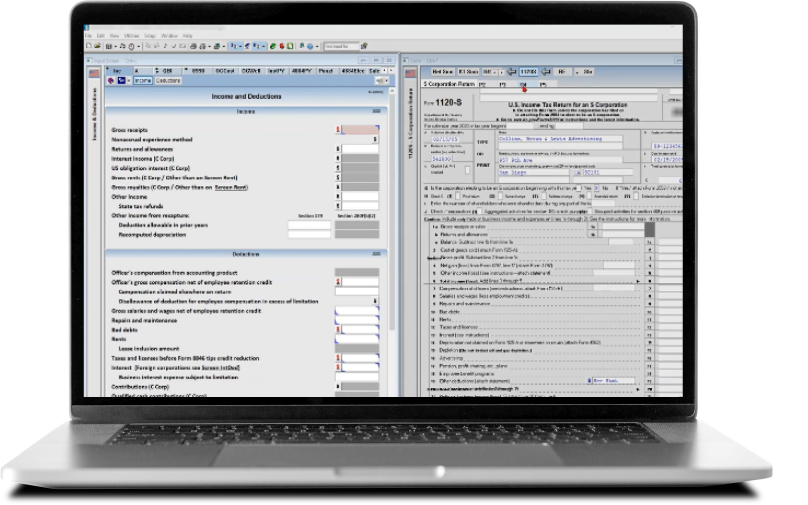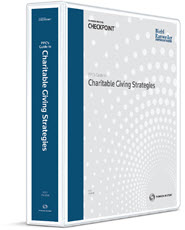Rules, benefits, and deductions for donation of non-cash items.
Donating to charitable organizations not only enriches society but can also offer beneficial tax deductions. In terms of documentation, Form 8283 plays a significant role in non-cash charitable contributions for taxpayers looking to claim deductions for items ranging from vehicles to clothing to other valuable assets.
For accountants, navigating the complexities of Form 8283 and the tax implications of non-cash charitable contributions is essential in providing solid financial guidance to clients and optimizing their tax benefits.
Jump to ↓
What is Form 8283?
Form 8283 is used to ensure U.S. taxpayers are accurately valuing their noncash contributions and claiming the appropriate tax deductions. Noncash contributions can include property such as artwork, real estate, vehicles, and other assets, but do not include cash, check, or other monetary gifts.
When filing taxes, individuals must include Form 8283 along with their tax return if their noncash contributions exceed the $500 threshold. Additionally, depending on the value of the donation, a qualified appraisal may be required to support the valuation claimed on the form. This form helps the IRS to verify that taxpayers are not overvaluing their noncash contributions for tax deduction purposes.
Form 8283 instructions
The IRS provides comprehensive instructions for Form 8283, which includes a thorough explanation of each section and the supporting documentation required for different types of charitable contributions.
It is imperative to follow these instructions meticulously to ensure accurate reporting and to avoid potential discrepancies that might raise red flags for your clients during an IRS audit.
What is the cost basis for non-cash charitable contributions?
The cost basis for non-cash charitable contributions refers to the original value of the donated property at the time of acquisition by the donor. It is typically used to determine the amount of the charitable contribution and any potential tax benefits associated with the donation.
When individuals make non-cash charitable contributions, they are usually entitled to a tax deduction based on the Fair Market Value (FMV) of the donated property, subject to certain limitations and requirements set by the IRS.
It’s important to note that the determination of the cost basis for non-cash charitable contributions can depend on various factors, including how the property was acquired, whether it was inherited, gifted, purchased, or received through other means. Different rules may apply based on the nature of the property and the circumstances of its acquisition.
For instance, if the property was purchased, the cost basis is generally the original purchase price plus any additional costs incurred for improvements or other relevant expenses. On the other hand, if the property was inherited, the cost basis is often the FMV of the property at the time of the donor’s death.
To ensure compliance with IRS regulations and to accurately determine the cost basis for non-cash charitable contributions, accountants should refer to relevant IRS guidelines and publications. Understanding the rules regarding cost basis can help donors accurately assess the value of their charitable contributions and maximize any potential tax benefits.
What are the rules for non-cash donations?
The IRS has established specific rules and guidelines for non-cash charitable contributions in order to ensure that taxpayers accurately report their donations and claim the appropriate tax deductions. Some key rules for non-cash charitable contributions include:
- Eligible organizations. Donations must be made to eligible organizations that are recognized as tax-exempt under section 501(c)(3) of the Internal Revenue Code. Contributions made to individuals or non-qualified organizations are generally not eligible for tax deductions.
- Documentation. Taxpayers must maintain proper documentation for non-cash charitable contributions. This includes a receipt or written acknowledgment from the charitable organization for all contributions exceeding $250, as well as a detailed description of the donated property.
- Valuation. Donors must determine the Fair Market Value (FMV) of the donated property at the time of the contribution. The FMV is typically the price that the property would fetch on the open market. In some cases, obtaining a qualified appraisal may be necessary, especially for high-value items.
- Limitations. There are certain limitations on the amount of the charitable contribution deduction that can be claimed in a given tax year. The limitations may vary depending on the type of property donated and the donor’s adjusted gross income.
- Qualified appraisals. For certain non-cash contributions exceeding $5,000, donors are required to obtain a qualified appraisal of the donated property. The qualified appraisal must be conducted by a qualified appraiser, and the resulting appraisal report must meet specific IRS requirements.
- Substantiation requirements. The IRS requires donors to complete and file Form 8283 for non-cash contributions exceeding $500. Additionally, specific details about the contributed property, such as its description, date acquired, cost or other basis, and fair market value, must be included on the form.
Complying with these rules and regulations is crucial to ensure that taxpayers accurately report their non-cash charitable contributions and claim the appropriate tax deductions.
What is the tax benefit of donating a car?
Donating a car can potentially yield a tax benefit for the donor. The value of the deduction depends on various factors, including the Fair Market Value (FMV) of the car, how the charity uses the vehicle, and whether the charity makes significant intervening use of the vehicle before selling it.
Accountants should ensure compliance with IRS regulations to maximize the tax benefit for their clients. See A Donor’s Guide to Vehicle Donation for specific information.
How do I get a boat donation tax deduction?
Here’s a general guide on how to get a boat donation tax deduction:
- Choose a qualified charitable organization. Ensure that the organization to which you plan to donate the boat is recognized as a tax-exempt organization under section 501(c)(3) of the Internal Revenue Code.
- Determine the Fair Market Value (FMV) of the boat. To claim the tax deduction, you need to determine the FMV of the boat at the time of the donation. This typically involves assessing the current market value of similar boats based on factors such as the make, model, age, condition, and any additional features or modifications.
- Obtain a written acknowledgment. If the total deduction you’re claiming for the boat is more than $500, you will need a written acknowledgment from the charitable organization that includes a description of the donated boat and whether any goods or services were provided in exchange for the donation.
- Complete Form 8283, if needed. If the value of the boat exceeds $500, you will need to complete and file Form 8283, Noncash Charitable Contributions, along with your tax return. For boat donations exceeding $5,000, a qualified appraisal is generally required.
Is there a tax deduction for donation of clothing?
Donating clothing to charitable organizations can lead to a tax deduction as well. However, to claim this deduction, it is essential to provide an itemized list of the donated items along with their estimated Fair Market Value (FMV).
IRS Publication 561 provides guidelines and resources to help you determine the FMV of your non-cash charitable contributions, including clothing donations.
It is important to note that there may be limitations on the amount of your tax deduction based on your Adjusted Gross Income (AGI) and the type of charitable organization you donate to.
Can donated services be tax deductible?
No. The IRS does not allow individuals to claim tax deductions for the value of their time or services. However, certain expenses incurred while providing volunteer services might be deductible, provided they meet specific criteria outlined by the IRS.
Helping clients with non-cash charitable contributions on their tax return
For tax professionals, assisting clients with non-cash donations on their tax returns demands a comprehensive understanding of IRS tax laws and regulations. It is crucial to guide clients through the process of accurately reporting their charitable giving and ensuring that all necessary documentation is in place to support their claims, thereby avoiding any potential issues with the IRS.
Accountants can leverage integrated tax software to streamline the process of identifying and accurately recording non-cash charitable contributions using Form 8283. Tax software can assist in accurately calculating deductions, minimizing errors, and ensuring compliance with the latest IRS guidelines, while saving both time and money.
By leveraging the capabilities of Thomson Reuters UltraTax CS, you can be confident in your ability to guide clients on the best charitable giving tax strategies, while optimizing your firm’s tax planning and preparation workflow.

UltraTax CS
Professional tax preparation software to reduce your workflow time and increase your productivity
Learn more ↗












